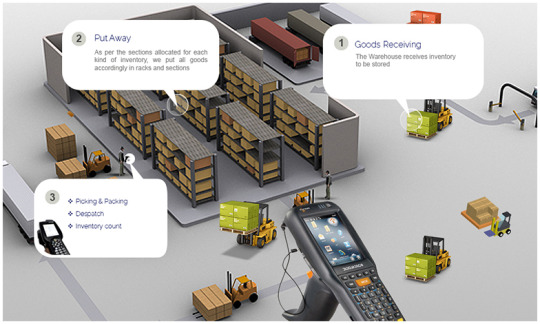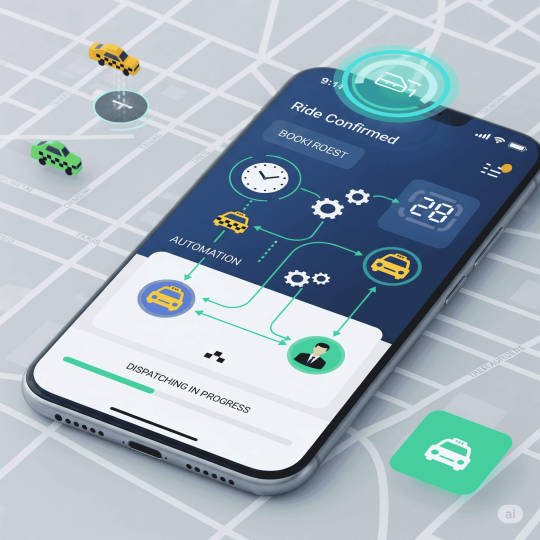#Vehicle Dispatch Software
Explore tagged Tumblr posts
Text
#GPS tracking system Michigan#GPS tracking for fleets#GPS Vehicle Tracking system Michigan#GPS Vehicle Tracking solutions Michigan#Dispatch software for service companies
0 notes
Text
Streamline Your Trucking Operations with iTruckDispatch App
Take your trucking company to the next level with the iTruckDispatch app. Featuring advanced load tracking and vehicle tracking capabilities, this app simplifies dispatch management, improves efficiency, and boosts productivity. Whether you’re managing a fleet or dispatching loads, iTruckDispatch ensures seamless operations. Download the app today and experience the future of trucking management!
#load tracking#trucking company#vehicle tracking#novice drivers#vehicle maintenance#trucking services#tracking app#load management#fleet management solution#dispatch software#load tracking app
0 notes
Text
Expanding Your Horizons with Delivery Services

Companies continually seek ways to build customer relationships that go beyond the product itself, fostering loyalty. One method gaining popularity is offering delivery routing software to customers. With social distancing and stricter in-store regulations, providing delivery services has become essential for business viability. The New York Times reported a nearly 40% increase in online consumer spending at the pandemic's peak, while in-person shopping had already declined as younger consumers favored online options.
Delivery costs can be substantial, comprising up to 30% of the total meal cost (TMC), and food deliveries can reach as high as 45%. These costs are challenging to hide within product prices and are often waived as a competitive advantage. Traditionally, companies relied on third-party delivery services, but many, like Amazon, are now developing their own. The explosive growth of digitally-enabled delivery services underscores the value customers place on convenience and variety. McKinsey projects the digital food delivery market will reach $22 billion by 2025, prompting many companies to internalize their delivery services to tap into this revenue.
Well-managed delivery services can enhance customer loyalty, reduce emergency response costs, maintain control over customer data, and streamline the delivery process. They can also be a revenue source and boost margins if effectively managed. Conversely, poorly managed services can be costly.
To plan and execute deliveries effectively, companies are adopting delivery management solutions to streamline their services. Organizing routes and building efficient delivery plans are crucial for lowering operational costs.
NetScore’s Delivery Routing application, built on the NetSuite ERP system, offers a comprehensive planning solution for dispatch route organization. It includes a mobile application providing drivers with necessary delivery tools.
Effective organization is key to successful delivery operations. As sales orders are processed in NetSuite Delivery Routing system generates delivery orders, using geo-point mapping to create stops. A rule-based system controls route building, managing order numbers, truck capacity, and transit times. Dispatch route planner can be adjusted according to preferences and assigned to drivers.
Fleet vehicle tracking ensures drivers follow the most efficient routes and stay on schedule. NetScore allows planners to view graphical route representations and receive real-time updates. A map view shows driver locations, enabling route adjustments as needed. Delivery orders can be reassigned if a vehicle breaks down or additional help is required.
Simplifying drivers' tasks is crucial for cost-effective route planning software. Effective route plans ensure proper truck loading in reverse stop order. NetScore’s solution provides route plans usable as picking or loading documents to position orders correctly for truck management system.
Executing the route plan is vital for timely, cost-effective deliveries. Mobile applications equip drivers with powerful tools for delivery execution. NetScore’s Delivery Routing solution offers:
- Graphical route depictions
- Travel time between stops
- Turn-by-turn instructions
- Order contents
- Customer delivery alerts
- Reasons for delivery cancellations
Proof of delivery is crucial, capturing signatures, photographing product drops, and noting key delivery information. NetScore’s mobile app facilitates quick data collection, automatically uploading it to the backend system and attaching it to the delivery record. Integration with Google Drive helps store pictures and signatures, minimizing NetSuite data storage.
Expanding delivery operations can optimize company benefits. Functions like picking up returns, accepting payments, and collecting products based on purchase orders during delivery routes are advantageous. NetScore’s Delivery Routing application integrates these features into your NetSuite system and mobile application.
For assistance in planning and implementing your delivery service, please contact a NetScore Account Executive.
#fleet vehicle tracking#dispatch route planner#route planning software#delivery routing software#netsuite delivery routing#truck management system
0 notes
Text
Day 61 (2/2)
Zero Dawn Facility

Herres began with a revelation: nothing could save the world from the Faro plague. He went on to detail the projected rapid explosion of their population as they continued to self-replicate, consuming every living thing on the planet and degrading conditions until the air was poison and the lands uninhabitable. There was no hiding from the swarm; they would leave a barren earth behind them and at the first sign of returning life, they would wake from slumber and fuel themselves with whatever they could find. It would take decades to generate the swarm's deactivation codes, but the world had barely more than a year.

Operation Enduring Victory was a lie from the very beginning. There was no hope and there never had been. From the moment Elisabet reviewed Faro's data in Maker's End, she must have known. That explains why the War Chiefs at US Robot Command were so horrified with the idea of Enduring Victory. All they were doing—all those people standing between the swarm and the next city, fed false hope—was buying time for project Zero Dawn.

Then he revealed Elisabet's image, a small glimmer of hope. She was to explain the true purpose of the project in the next theatre. It didn't make any sense—if none of the Old Ones survived the swarm, then how did life continue?


I was right about the Shadow Carja. It seemed that the vents opening gave them other routes down. The kestrels were ignorant of the ruin's true nature, but I knew that once the Eclipse caught wind of the breach, they were certain to start salvaging data for Hades. I couldn't let them find Zero Dawn's secrets before I did.
I took a few of the kestrels out undetected before picking up one of their Firespitters and dispatching the rest.
The rooms were full of recorded interviews with various Zero Dawn 'candidates'. They were scholars, all from disparate fields of expertise. Experts in art and history, in environmental conservation, in robotics and engineering and artificial intelligence. There was a particularly colourful character named Travis Tate who I gathered was some sort of criminal. All of them were requested by Elisabet herself, and all of them had very different reactions to learning that all hope was lost. Anger, resignation, grief, confusion. Many questioned whether the swarm was truly unstoppable, who was culpable (a man named Tom Paech was out for Faro's blood), and why they of all people were chosen for the project.
They were all skeptical about what Elisabet could possibly have come up with to save a doomed world. One named Ron Felder latched onto the idea of a vehicle to take people away from Earth, a 'generation ship'. I never suspected that such a voyage was possible, though Ron didn't seem to think so either, at least that it could save only a handful of people if successful given the resources involved. One of the candidates was even a Faro employee himself, a lead developer of the Chariot line's self-replication procedures. He was overcome with guilt, eager to see his work quashed by some miracle of science.

In the next room, Elisabet's presentation began. She confirmed Herres' assessment of the situation, then expounded her solution.


A seed, she called it, from which new life could grow on a dead world: Gaia. An AI—a true AI, she said—engineered to deactivate the Faro robots and grow life on Earth anew. The central intelligence was joined by nine subordinate functions, not AIs in themselves but still complex software systems, each serving a different purpose. It was as their names were revealed in the presentation that some of my greatest questions were answered.

Hephaestus, and Hades. Both of them were part of Gaia, her subordinate functions. But if they were once part of the system, how did Hades end up in the body of a Horus leading a Carja cult, and how did Hephaestus end up scattered across Cauldrons and infecting Cyan?
Only a few of the functions were mentioned: Hephaestus was meant to build the machines of the wilds, Aether to purify the air, Poseidon the water, and Minerva generated the codes that deactivated the swarm decades after the Old Ones fell—and its tower pictured looked just like the Spire. Artemis spawned animals, many of the holographic silhouettes familiar to me from the wilds, and Eleuthia...it spawned human beings in 'Cradle Facilities'. The presentation didn't explain how.

One function stood out to me: Apollo. It was meant to be a repository of all human knowledge that the children of the Cradle Facilities would learn from. The picture showed a Focus used to channel this knowledge, but what happened to it all? Could it still be intact somewhere? Whatever happened, that knowledge never made it to the people of the tribes, and Elisabet's hope that the people of the future wouldn't repeat the mistakes of the Old Ones was dashed.

Elisabet ended her presentation by imploring the candidates to join the project and help Gaia achieve a rejuvenated earth, and I can't deny her words were rousing. It was a beautiful dream, daringly ambitious, perhaps even close to impossible given what little I know about Old World technology. At the very least, creating a 'true' AI was strictly forbidden by all corporations, but at the end of everything, what did those regulations matter? What better to combat a machine of destruction than a machine of creation, a true peacekeeper?

Moving on, I came to another holding area. All candidates who experienced the presentations were given three choices to decide their fate. First, to comply and participate in the project, working with their assigned team to build Gaia and her subordinate functions. If they refused to comply, they would be detained indefinitely, without a chance to reconsider after two days' time. Given they knew the truth about Operation Enduring Victory, they could not be allowed to leave and spread that information. It seemed cruel, but I can understand the need for strict secrecy. If people found out that there was no hope for humanity as they knew it, they would be likely to throw down their arms and try to end their lives as peacefully as possible, instead of in pain and fear in resistance against the swarm.

The third option was medical euthanasia; to die painlessly, alone, holding this secret forever. I saw the room where it happened. One bed, cold metal, cold lights striping the walls.
The interviews recorded showed all three reactions. Some were eager to contribute, willing to give all they could for a slim chance to save the future. The Faro employee, for instance, was thankful for a chance to undo his mistakes. Others were more skeptical but still willing to try, while others found the idea ridiculous. Ron Felder thought it even more far-fetched than space flight, calling the whole thing nothing more than a fantasy with a crazy hologram display to match. I gathered he was detained.
Perhaps the most interesting reaction was that of Travis Tate. He called the whole notion of trying to re-engineer the natural world unnatural, even abominable. Another reason that they couldn't let the secret out was that others would agree with him. I suppose I can see his point, but surely it was worth trying. Benefit of hindsight, I guess. Having no conception of what the natural world once was, it's beautiful to me. Maybe to them it would feel wrong, artificial.

More kestrels further on, all touting Firespitters. Once one was down the rest were easy prey.


Unfortunately I was right about the Eclipse. The deeper reaches of the ruin were already crawling with them. I was hoping to sneak around and climb the elevator shaft to Elisabet's office above, where the most classified data was sure to be kept, but the entrance was sealed. There was no way I could search for other exits and go undetected. I tried to take out the Eclipse unseen, but was spotted and they called for reinforcements, running in from neighboring chambers and rappelling from the upper level. It was a tough scrap, but there was plenty of cover. I lost them easily in the dark and was able to sneak around. The real problem was that now they knew I was here.

While exploring I came across the workstation for the Hephaestus function. There was a holographic recording of its director, Margo Shen, an ex-colleague of Elisabet at FAS before they both left the company. She explained that their job wasn't to design machines, but to program Gaia to use the tools and data contained within Hephaestus to design machines of her own. Hephaestus was clearly never meant to be intelligent, to feel emotions of its own—so what happened to it?
Sylens suggested it might have gone 'rogue' like the swarm and stopped answering orders. Maybe Gaia is out there, unable to communicate with the tribes or get Hephaestus and Hades back under control. If Hephaestus struck out on its own when the Derangement began, when did Hades escape—the same time?
I recognised some of the mechanical structures and holographic designs I found from Cauldrons, iterated on and grown wild. Everything was beginning to make sense.

Further on I found a similar recording of the leader of Apollo, Samina Ebadji. She spoke of collating, organising, and storing records of human knowledge across millions of different topics, and building a learning interface where the people of the future could gain that knowledge through a game-like process. Such an important station, authoring what would shape the future of human civilisation—choosing what would be remembered and what should lay forgotten. From the datapoints I discovered, the project was running on schedule and they were planning to store the data in 'synthetic DNA'. If Samina's project didn't fail, then what happened to it?

More Eclipse in the next chamber, which I dispatched undetected. I found a recording from General Herres—some sort of testimonial, an apology for the lies and injustices of Operation Enduring Victory. I can't imagine the guilt, but it was the right thing to do. It has to be, or nothing would have survived. The swarm would have swallowed this facility long before Gaia's completion.
In more datapoints I found, Margo and the other function leaders were named 'Alpha candidates'. Back in All-Mother mountain, when the door denied me, it said that the Alpha registry was corrupted. Was it trying to match my identity to the list of Alpha candidates on the project? If that piece of data was part of all Zero Dawn's associated facilities, I suspected I could find it here as well.

Next, I entered Hades' old domain and listened to an introduction by Travis Tate, the eccentric 'hacker'. From what I could gather, his crimes consisted of exposing the dark secrets of corporations and orchestrating sort of technological pranks on a global scale. Elisabet trusted him enough to put him in charge of the Hades function, but judging by what's happening now his work left something to be desired.
Hades was Gaia's extinction function. 'Apocalypse on speed dial', Travis called it, the idea being that Gaia was unlikely to engineer a perfect Earth-like biosphere on the first go. It was a delicate balance to recreate, and in the event of firestorms and poison skies irrevocably locked in a cycle of chaos, Hades was built to temporarily take control of the system away from Gaia and undo terraforming operations, returning Earth to the barren rock it was when the swarm subsided so Gaia could begin again. One of the datapoints spoke of a facility where Gaia and Hades were tested together, where Travis tried to engineer the correct feedback and reward behaviour to ensure the entities passed control back and forth as desired. It seems that of all the subordinate functions, Hades was the most intelligent, as it needed to be able to manipulate the other functions in event of a catastrophe. Though, again, it was never intended to possess emotional responses.
But Gaia succeeded long ago, why would Hades wake now? Did it try to take control, causing Gaia to expel it from the larger system? If it no longer had Gaia's tools and functions available to it, it seems logical that its next best course to undo Gaia's work would be to wake the Faro bots themselves to resume their gruesome conquest. Thanks for that, Travis.


Next on my journey to Elisabet's office, I passed Eleuthia's headquarters and listened to an address from its leader, Patrick Brochard-Klein. He spoke of perfecting the technology to create humans inside machines, and to build 'servitors', robotic guardians resembling humans themselves, who would care for the new generations inside their Cradles. He stressed that this was a project of preservation, not 'genetic engineering', and spoke of regulations around...cloning, which he refused to transgress. Clone, as in copy.
There were many 'ectogenic chambers' inside the workshop—the machines from which new humans were spawned. The logs I found said they were donated by Far Zenith, whose conception of the technology was far ahead of public scientific records. I've come across a few datapoints mentioning the organisation before, sometimes called simply 'FZ'. They were a mysterious group of billionaires (a word for the wealthiest and most powerful of the Old Ones), their identities unknown to all outside the group. They had their own 'think tanks' and scientists developing technology in secret, much like a corporation, or a co-merging of many corporations, using the exhaustive profits of them all. I know they bought a space station called the Odyssey, though when I first read this I didn't understand what it meant. From Ron Felder's tirade, I knew then. A structure built to travel away from this world, through the stars. With the most advanced technology and near-infinite resources available, could they have succeeded?
Thoughts gathered in the back of my mind that I wished to ignore. It was clear to me that All-Mother mountain must have been one of these Cradle facilities, given the ruin inside and the bunker door, answerable to Elisabet. Every Nora myth pointed to this too: the life-giving goddess within, and its battle against the Metal Devil. Perhaps some knowledge of the Old Ones did survive and was imparted to the first new people of the earth. And of course...I came from that mountain. I was found just outside its doors, alone. I suppose some of the first people might have remained behind the door. Perhaps there was a schism long ago, or they're protecting the Apollo archive inside. Maybe helping Gaia to operate. But why wouldn't they try to communicate with the world outside?


Finally, I made it to Elisabet's workshop. There were a number of preserved recordings inside. The first, an argument between Elisabet and Ted. I'd hazard a guess that this happened often. To think that he still had the gall to argue with her after everything he did...I suppose she had to put up with it considering he was funding the operation.
Faro was disputing Elisabet's assertion that Gaia had to have complex emotional capabilities to properly rebuild and safeguard the world. She needed 'skin in the game', Elisabet said—I suppose if she felt no emotional connection to life, human or otherwise, she'd have no incentive to put their needs first, or the means to conceptualise their needs accurately to begin with. Intelligence and emotion go hand in hand, as Cyan explained.
Faro was wary of 'repeating past mistakes'. I'm don't think he was only talking about the swarm, because they had no emotional capacity themselves, only strategic intelligence. He wanted a kill switch, which I gathered ended up being Hades—a way to wrest control from a version of Gaia gone wrong. Gaia herself chimed in and agreed with him, understanding her own volatility. Her voice was beautiful: smooth and deep and full of care. Maybe it was only a clever trick of programming in those early days, but she sounded like she had developed emotions already. Her projection didn't match the figure I saw in Elisabet's presentation though. She was just a golden ball of liquid light.


More recordings, the first of Elisabet and Gaia discussing her emotional responses to mass extinction events of the ancient past. It seemed her development was going well, but it was cut short. In the final recording, Elisabet was panicked, erratic, irritable. She was trying to lock everything down and evacuate the facility before the swarm hit, evidently ahead of projected schedule. Gaia comforted her, and for the first time I witnessed a moment of weakness in Elisabet. She lamented all the lives lost in Enduring Victory—all those deaths, those lies, would be for nothing if she couldn't complete Gaia in time.

In Elisabet's office, along with plenty more data to sift through, I found just what I was looking for: an intact copy of the Alpha registry. I made the mistake of voicing my wish to meet my mother inside All-Mother mountain's Cradle, which Sylens shut down with derision. He said there would be no people behind that door, only machines. I refused to believe it.

As I was downloading a copy to my Focus, more Eclipse soldiers began to descend from above. I couldn't leave until the transfer was complete, and just as it did I went to make my escape, but behind the glass was Helis. We locked eyes for the first time since the Proving. Before I could react, he threw a bomb and detonated it in front of the glass, blasting it inward and knocking me back against the desk.

I only fell unconscious for a few moments, but it was enough for Helis to land at my side, glare smiling with those pale, manic eyes, and kick me back into the darkness.
#god i was dreading writing this one. so much lore#hzd#horizon zero dawn#aloy#aloy sobeck#aloysjournal#hzd remastered#photomode#virtual photography#horizon
12 notes
·
View notes
Text
As a trucker, you can perform various tasks within truck dispatching:
*Primary Responsibilities:*
1. Receive and accept load assignments from dispatchers.
2. Review load details, routes, and schedules.
3. Plan and navigate routes using GPS and maps.
4. Manage cargo, including loading/unloading and securement.
5. Comply with safety regulations, hours of service, and company policies.
6. Communicate with dispatchers, shippers, and receivers.
7. Update dispatchers on shipment status and any issues.
*Additional Tasks:*
1. Pre-trip inspections: ensure vehicle safety and compliance.
2. Fuel management: optimize fuel efficiency and costs.
3. Maintenance scheduling: coordinate vehicle maintenance.
4. Logkeeping: maintain accurate records of hours, miles, and cargo.
5. Customer service: interact with shippers, receivers, and brokers.
6. Route optimization: suggest alternative routes or improvements.
7. Load optimization: maximize cargo capacity and revenue.
*Technology Used:*
1. Electronic Logging Devices (ELDs)
2. GPS tracking systems
3. Mobile apps (e.g., Trucker Path, TruckStop)
4. Fleet management software (e.g., TMW, McLeod)
5. Communication platforms (e.g., phone, email, messaging apps)
*Skills Required:*
1. Knowledge of transportation regulations
2. Navigation and route-planning skills
3. Time management and organization
4. Communication and customer service skills
5. Mechanical knowledge of trucks and equipment
6. Adaptability and problem-solving
7. Attention to detail and safety protocols
*Career Advancements:*
1. Lead driver or mentor
2. Fleet manager
3. Safety inspector
4. Dispatch coordinator
5. Logistics manager
6. Owner-operator or small fleet owner
7. Transportation consultant
*Benefits:*
1. Competitive pay and benefits
2. Job security and stability
3. Opportunities for advancement
4. Independence on the road
5. Variety in routes and cargo
6. Sense of accomplishment and satisfaction
Would you like more information on:
1. Trucking regulations
2. Dispatching software
3. Career development
4. Safety protocols
5. Something else
Let me know!
2 notes
·
View notes
Text

easyTRACK Warehouse Management System
An intelligent solution to control movement and storage of materials within a Warehouse.
A well-structured Warehouse Management system is important for the smooth and efficient operation of any warehouse, irrespective of the size or volume of material it handles. Most of the small and medium warehouses do not require an expensive WMS with redundant features. easyTRACK WMS is a perfect solution on the enterprise mobility for the warehouse management of small and medium enterprises which helps them manage all the essential warehouse functions. easyTRACK warehouse automation software allows the users in warehouse to manage the following operations at their palm.
Goods receiving
Put away
Picking & Palletizing
Dispatch
Stock count, etc.
easyTRACK WMS Lite Benefits
Solves the challenges faced in the conventional system.
Goods Receiving-
Priority Issue Multiple Shipments received at a time
Delayed Data entry Stock may be available but not available for Sale Dead /Damage/Short supply on arrival not instantly notified.
SOLUTION: GRN on PDT “goods receiving made easy with GRN on PDT”
Welcome to Technowave Group, your trusted provider of advanced technology solutions in Dubai. Our RFID Warehouse Inventory Management Systems can help businesses improve their inventory management and provide complete visibility into their warehouse operations.
What is RFID Warehouse Inventory Management System?
RFID Warehouse Inventory Management System uses RFID technology to automate the process of inventory tracking and management. It involves tagging inventory items with that contain unique identification numbers. The RFID tags are read by RFID readers, which transmit the data to a computer system that stores the information and provides real-time updates on the inventory’s location, movement, and status.
Key Features of our RFID Warehouse Inventory Management System
Our RFID Warehouse Inventory Management System comes with the following key features:
Real-time inventory tracking:
Our RFID system provides accurate and up-to-date information on inventory levels, locations, and movements in real-time. This means that businesses can quickly identify any discrepancies, such as missing or misplaced items, and take corrective action before they become bigger problems.
Inventory management:
Our RFID system automates the inventory management process, including item counting, reordering, and tracking. This means that businesses can easily monitor inventory levels and reorder products when they are running low. This helps prevent stockouts and ensures that products are always available for customers.
Asset tracking:
It can track and manage assets, including equipment, tools, and vehicles, helping businesses keep track of their assets’ location, status, and maintenance schedules. This allows businesses to optimize asset utilization and minimize downtime, which can result in significant cost savings.
Reporting and analytics:
The RFID system generates detailed reports on inventory and asset tracking, providing businesses with valuable insights into their warehouse operations. Businesses can use this information to identify areas for improvement and make informed decisions about inventory levels, order fulfillment, and asset management.
Improved accuracy and efficiency:
Our RFID system eliminates the need for manual inventory tracking, reducing the risk of errors and improving accuracy. This saves time and resources by automating inventory management and asset tracking, allowing businesses to focus on other critical tasks.
Improved visibility and control:
It provides real-time updates on inventory and asset movement, giving businesses complete visibility into their warehouse operations. This helps businesses make informed decisions and take corrective action quickly, leading to increased efficiency and productivity.
Improved customer satisfaction:
Our RFID system helps businesses improve their order fulfillment process, reducing stockouts and improving delivery times. This leads to increased customer satisfaction and repeat business, which can be a significant competitive advantage in today’s market.
Compliance with regulations:
Last but not least, our RFID system helps businesses comply with regulations related to inventory tracking and management. For example, our system can provide traceability requirements for food and pharmaceutical products, ensuring that businesses meet regulatory requirements and avoid costly penalties.
Overall, our RFID Warehouse Inventory Management System offers businesses a range of benefits, from increased efficiency and productivity to improved customer satisfaction and regulatory compliance.
Get in Touch With Us!
At Technowave Group, we have a team of experienced professionals who are dedicated to providing high-quality service and support to our clients. We work closely with our clients to understand their unique business needs and provide tailored solutions that help them achieve their goals.
Whether you are a small business or a large enterprise, we can help you leverage technology to improve your warehouse operations and achieve your goals. Contact us today to learn more about our RFID Warehouse Inventory Management System and other technology solutions.
3 notes
·
View notes
Text
Best Logistics Fleet Management Software
In the rapidly evolving world of logistics, effective fleet management is the key to success.
Whether you oversee a fleet of trucks, delivery trucks, or a combination of vehicles, having the right logistics fleet management software can be a game changer. These software solutions are designed to streamline operations, reduce costs and improve overall efficiency. In this article, we'll explore some of the best logistics fleet management software options available, each offering unique features to help businesses navigate the path to efficiency.

1. Geotab:
Geotab is a comprehensive fleet management software known for its real-time tracking, route optimization, and maintenance tracking. It's a versatile solution suitable for fleets of all sizes.
2. Samsara:
Samsara offers a robust fleet management platform with features like real-time GPS tracking, driver safety monitoring, and vehicle diagnostics.
It's a favorite among businesses looking to enhance safety and compliance.
3. Teletrac Navman:
Teletrac Navman provides fleet management software focused on real-time tracking, compliance and driver behavior monitoring.
This is the preferred choice for companies looking to improve driver performance and reduce fuel costs.
4. Fleet Complete:
Fleet Complete offers a comprehensive suite of fleet management tools, including GPS tracking, dispatching and asset management. It is highly adaptable and can cater to different industries.
5. KeepTruckin:
KeepTruckin is known for its user-friendly fleet management software. It offers features like electronic logging, IFTA reporting, and vehicle inspections, making it a great choice for small to medium fleets.
6. Verizon Connect:
Verizon Connect provides GPS fleet tracking software focused on route optimization, fuel management and field service automation. It is ideal for businesses looking to reduce costs and increase productivity.
7. Route4Me:
Route4Me offers advanced route optimization software, perfect for last-mile delivery operations. It offers real-time tracking, geolocation, and route planning capabilities, making it an essential tool for businesses delivering to customers.
8. WorkWave Route Manager:
WorkWave Route Manager is a cloud-based fleet management solution designed for mobile workforces. It offers route optimization, GPS tracking, and reporting, making it an ideal choice for delivery businesses.
Selecting the right logistics fleet management software is crucial for businesses seeking to stay competitive and efficient in the logistics industry. These software solutions cater to a wide range of needs, from real-time tracking and route optimization to driver safety and compliance.
As the logistics landscape continues to evolve, having the best fleet management software can put your business on the path to success.
5 notes
·
View notes
Text
The Impact of Autonomous Trucking on Texas Dispatch Services
The trucking industry is experiencing a technological revolution with the rise of autonomous trucking. Texas, with its vast highways and bustling freight corridors, is at the forefront of this change. As self-driving trucks begin to navigate Texas roads, the role of traditional truck dispatch services is evolving. This blog explores the impact of autonomous trucking on Texas dispatch services and what it means for the future of freight logistics in the Lone Star State.
Autonomous Trucking: A Game-Changer for Freight
Autonomous trucks use advanced sensors, radar, cameras, and AI software to operate without human drivers. In Texas, companies like Aurora Innovation and Bot Auto are pioneering commercial self-driving truck services, especially on major routes like Interstate 45 between Houston and Dallas. This innovation promises to improve safety, reduce driver fatigue, and lower transportation costs by enabling trucks to operate longer hours without breaks.
How Autonomous Trucks Affect Dispatch Services in Texas
Traditionally, truck dispatch services in Texas coordinate routes, negotiate loads, manage driver schedules, and ensure compliance with regulations. They act as a critical link between shippers, brokers, and drivers, optimizing operations for efficiency and profitability.
With autonomous trucks, some of these responsibilities will shift:
Real-Time Monitoring and Remote Support While autonomous trucks can drive themselves, dispatchers will play a key role in remote monitoring. They will track vehicle health, intervene in emergencies, and optimize routes dynamically based on traffic and weather conditions. The best truck dispatch services in Texas are already investing in technology platforms to support such real-time management.
Load Coordination and Brokerage Autonomous trucking doesn’t eliminate the need for load matching and brokerage. Dispatch services will continue to secure the most profitable loads and negotiate rates, ensuring the autonomous fleet operates at maximum efficiency.
Regulatory Compliance and Safety Oversight Dispatchers will remain essential in managing compliance with state and federal regulations. Autonomous trucks introduce new regulatory challenges, such as cybersecurity and software certification, which dispatch services will need to navigate.
Transition and Hybrid Fleets The shift to fully autonomous trucking will take time. Many fleets will operate hybrid models combining human-driven and autonomous trucks. This requires dispatch services to adapt to mixed operations, coordinating both types of vehicles seamlessly.

Why Choose the Best Truck Dispatch Services in Texas Now?
As autonomous trucking technology develops, partnering with the best truck dispatch services in Texas becomes even more critical. Experienced dispatchers understand the complexities of Texas logistics and are agile enough to integrate new technologies. They can provide personalized support whether you run a traditional fleet or are adopting autonomous vehicles.
Leading dispatch services are investing in software upgrades, training, and infrastructure to support autonomous trucking. By choosing a dispatch partner that embraces innovation, fleet owners can stay competitive, reduce downtime, and increase profitability.
Looking Ahead: The Future of Truck Dispatch in Texas
Autonomous trucking promises greater efficiency, safety, and cost savings for the freight industry. Yet, it doesn’t eliminate the need for skilled dispatch services. Instead, it transforms their role into a more tech-driven, oversight-focused position.
Texas remains a key hub for freight movement in the U.S., and the integration of autonomous trucks will only increase its importance. Dispatch services that adapt quickly and leverage technology will lead the way, ensuring fleets remain agile and profitable.
In summary, autonomous trucking is reshaping the trucking landscape in Texas, and dispatch services must evolve accordingly. Choosing the best truck dispatch services in Texas today ensures your fleet is prepared for the changes on the horizon.
#aerolink carrier llc#best truck dispatch company in texas#Best Truck Dispatch Company in Texas#freight carrier
0 notes
Text
Revolutionizing Operations with Field Service Management Software by FieldEZ Technologies
In today’s fast-paced, service-oriented market, businesses need efficient, flexible, and intelligent systems to manage their field operations. Enter FieldEZ Technologies, a pioneer in providing cutting-edge field service management software that transforms how organizations handle on-site services, workforce management, maintenance, and customer interactions.
What is Field Service Management Software?
Field service management software (FSM) is designed to streamline and automate the tasks associated with dispatching technicians, tracking job progress, managing inventory, and ensuring timely service delivery. It bridges the gap between back-office functions and field operations, resulting in better coordination and improved service efficiency.
FieldEZ Technologies excels in this space by offering intuitive, scalable, and customizable FSM solutions that cater to various industries including telecom, HVAC, healthcare, construction, and retail.
Introducing FieldEZ’s Product Suite:
FieldEZ offers a powerful suite of software solutions, each tailored for specific business functions:
ServiceEZ: A comprehensive service management software that enables organizations to manage service requests, automate job allocation, and monitor field staff performance in real-time. It ensures quick response times, enhances customer satisfaction, and improves team productivity.
SalesEZ: Designed for sales teams in the field, this solution optimizes lead management, route planning, and real-time updates, helping businesses close deals faster and more efficiently.
RetailEZ: Created for retail operations, this tool simplifies inventory checks, audit processes, and team coordination to ensure seamless retail management.
Each product works independently or as part of an integrated ecosystem, making FieldEZ a one-stop solution for field service and operational needs.
Key Benefits of Using FieldEZ’s Field Service Management Software:
Real-Time Visibility: Managers can track technicians, vehicles, and job status live, ensuring better decision-making and timely service delivery.
Optimized Scheduling: Automated scheduling and intelligent routing reduce travel time and increase the number of jobs completed per day.
Mobile Enablement: Technicians can access job details, customer information, and submit reports from anywhere using mobile devices.
Data-Driven Insights: Built-in analytics and reporting tools help businesses monitor KPIs and fine-tune their processes for maximum efficiency.
Seamless Integration: FieldEZ software easily integrates with CRMs, ERPs, and other enterprise systems to ensure uninterrupted workflows.
Maintenance Management Made Simple:
FieldEZ’s solutions also act as efficient maintenance management systems. Whether it’s preventive maintenance, asset tracking, or repair scheduling, businesses can ensure their equipment and services are always functioning at peak performance. This reduces downtime, extends asset life, and increases ROI.
Why Choose FieldEZ?
With over a decade of industry experience and a proven track record across multiple verticals, FieldEZ Technologies is a trusted name in the world of field operations. Their solutions are used by thousands of field professionals globally, helping companies reduce operational costs, increase service quality, and achieve faster growth.
Whether you’re a startup aiming to build scalable service operations or a large enterprise looking to enhance field efficiency, FieldEZ has the right tools to support your goals.
Final Thoughts:
As customer expectations evolve and competition grows, having a reliable service management software is no longer optional — it’s essential. FieldEZ Technologies offers future-ready field service management software and maintenance management systems that empower organizations to meet service challenges head-on with confidence.
By adopting FieldEZ’s ServiceEZ, SalesEZ, or RetailEZ, businesses can not only streamline their field operations but also deliver exceptional service experiences that build trust and loyalty.
#fieldez#field service#services#apps#management software#field management#field service software#field force management#field workforce management#workflow automation
0 notes
Text
Limousine Dispatch Software for Premium Fleets

Limousine services need organized fleet operations. Businesses use limousine dispatch software to streamline bookings and dispatching. Limousine dispatch software assigns rides, tracks vehicles, and manages chauffeur schedules. It ensures on-time service and luxury experience for clients. Operators benefit from real-time monitoring and reporting tools. The system also handles billing and special customer requests. Enhance your limousine service with this all-in-one platform.
#dispatch system#cab dispatch system#software development#driverapp#chauffeur dispatch system#online taxi dispatch system
0 notes
Text
How Fleet Logistics Support Boosts Efficiency and Performance
In today's fast-paced and highly competitive environment, businesses that depend on transportation and fleet services must constantly innovate to maintain operational efficiency. Whether it’s supply chain management, emergency response, or public transportation, Fleet Logistics Support acts as a backbone, driving operational excellence and improved service delivery. But the question remains: How Can Fleet Logistics Support Improve Operations?

1. Enhancing Fleet Efficiency with Data-Driven Decisions
Modern Fleet Logistics Support relies heavily on telematics and real-time data analytics. GPS tracking, route optimization software, and vehicle diagnostics enable logistics managers to monitor fleet performance at every stage. These data points help identify inefficiencies, delays, or vehicle misuse, enabling quicker corrective actions.
Efficient route planning not only minimizes fuel consumption but also improves delivery timelines, enhancing customer satisfaction. Real-time monitoring reduces idle time and helps allocate resources where they’re needed the most, driving operational optimization.
2. Reducing Operational Costs
Operational cost reduction is a key metric for any business with a fleet. Fleet Logistics Support significantly cuts unnecessary spending by:
Reducing fuel usage through route optimization
Lowering maintenance expenses with predictive maintenance alerts
Minimizing overtime and idle labor hours
Preventing costly breakdowns through regular diagnostics
Incorporating smart logistics technology also reduces administrative burden and manual errors, saving both time and money in the long term.
3. Improving Safety and Compliance
Fleet safety is critical to business reputation and employee well-being. Logistics support systems improve safety by providing real-time driver behavior analytics. Fleet managers receive alerts on harsh braking, overspeeding, and unauthorized stops, promoting safer driving habits.
Moreover, compliance with government regulations becomes easier with automated logs and maintenance reports. These tools help companies avoid hefty penalties and ensure adherence to transportation standards, boosting trust and reliability in operations.
4. Boosting Fleet Productivity
Productivity is no longer just about how many trips a vehicle can make, but how efficient and reliable each trip is. Fleet Logistics Support ensures that vehicles are always in top condition, routes are optimized, and workloads are balanced evenly.
Automated dispatch systems and real-time scheduling make task assignments more effective, reducing response time and maximizing delivery throughput. Drivers can focus more on performance and less on paperwork, increasing overall productivity.
5. Enabling Scalable and Agile Operations
One of the core benefits of a robust logistics support system is scalability. As businesses grow, the complexity of their fleet operations multiplies. Fleet Logistics Support offers the flexibility to scale without sacrificing efficiency.
Whether managing 10 or 1,000 vehicles, logistics support systems maintain operational consistency. This adaptability makes it easier to expand services to new regions or markets and handle seasonal demand spikes without overburdening the existing fleet.
6. Promoting Sustainability Initiatives
Sustainability has become a key priority for modern businesses. Fleet Logistics Support aids in meeting green goals by:
Reducing carbon emissions through better route planning
Encouraging the use of electric and hybrid vehicles
Monitoring and improving fuel efficiency metrics
With increasing focus on ESG (Environmental, Social, and Governance) practices, these improvements help businesses maintain a positive public image and comply with environmental regulations.
7. Streamlining Communication and Collaboration
Integrated fleet logistics platforms allow seamless communication between drivers, dispatchers, and fleet managers. Cloud-based systems ensure everyone stays informed in real time, reducing miscommunication and delays.
Whether it’s rerouting during traffic congestion or informing a client of an ETA, the collaborative flow of information ensures swift responses and operational transparency—two key ingredients for long-term success.
8. Improving Customer Satisfaction
Ultimately, every logistical operation should align with one main goal: meeting customer expectations. On-time deliveries, real-time tracking, and responsive communication improve the end-user experience significantly. Fleet Logistics Support makes all this possible with its proactive approach to problem-solving and commitment to efficiency.
By reducing delays and errors, businesses can foster stronger customer relationships and gain a competitive edge.
Conclusion: The Future of Fleet Logistics Support
The importance of Fleet Logistics Support in modern operations cannot be overstated. It’s more than just a management tool—it’s a comprehensive strategy to elevate performance, cut costs, and create a resilient, future-ready fleet.
How Can Fleet Logistics Support Improve Operations? The answer lies in technology integration, data utilization, and proactive planning. As industries become more dynamic, embracing logistics support will be the key to navigating challenges and unlocking new growth opportunities.
0 notes
Text
Essential Realities for Novice Drivers: Navigating Your First Six Months on the Road
Starting your career as a novice driver? This blog covers essential tips for navigating your first six months on the road. Learn about the importance of vehicle maintenance, adapting to the demands of the trucking services industry, and staying safe while driving. Whether you’re new to trucking or seeking advice, this guide provides valuable insights to help you succeed. Equip yourself with the knowledge to thrive in your new role!
#novice drivers#vehicle maintenance#trucking services#tracking app#load tracking app#fleet management solution#carrier tracking#dispatch solutions#dispatch software
0 notes
Text
youtube
3 Signs You’re Ready for a TMS Upgrade Still stuck with spreadsheets, blind dispatches, and profit leaks?
You’re not alone—but there’s a fix. ✔️ Automate your load planning ✔️ Track vehicles in real-time ✔️ Stop losing money on fuel
Fast Forward TMS is the smart move for 2025. 🖱️ Click now to learn how TMS software for carriers changes everything.
#CarrierTMS #TransportManagementSystem #TMSOptimization #FleetTech
0 notes
Text
How to Reduce Operational Costs with Taxi Dispatch Software

In the competitive world of taxi services, operational costs can make or break a business. Taxi operators are constantly looking for ways to reduce expenses while improving service quality. One of the most effective tools for achieving this is taxi dispatch software, which can significantly streamline operations, enhance fleet management, and reduce costs.
If you are running a taxi service—whether it’s a small fleet or a large organization—implementing the right taxi dispatch software can lower overheads and increase profitability. Let’s explore how this technology can help businesses cut costs and improve efficiency.
1. Optimize Routes and Save on Fuel Costs

Fuel is one of the highest expenses for any taxi business. The longer drivers spend on the road, the more fuel they use, and this can significantly eat into profits. One of the core functions of taxi dispatch software is route optimization, which helps reduce fuel consumption.
By using real-time GPS tracking and traffic data, taxi dispatch software suggests the most efficient routes for drivers. This minimizes detours, avoids congestion, and ensures faster trips—resulting in lower fuel costs and higher productivity.
Benefits:
Reduced fuel consumption.
Shorter travel times.
Lower vehicle maintenance costs.
2. Reduce Idle Time and Improve Fleet Utilization
Idle time occurs when taxis are not in use—whether they’re stuck in traffic, waiting for a passenger, or parked waiting for the next ride. This is a major cost driver for many taxi companies.
With taxi dispatch systems, idle time can be minimized. The software automatically dispatches the nearest available driver to a new ride request. By analyzing real-time data, it reduces the time a vehicle is unproductive, increasing overall fleet utilization.
Benefits:
Maximized fleet usage.
Reduced downtime between rides.
Increased earnings per vehicle.
3. Automate Booking and Dispatching to Save Time

Traditionally, taxi services rely on manual systems to handle bookings and dispatch drivers. This can be time-consuming and error-prone. Taxi dispatch software automates these processes by offering online booking platforms, mobile apps, and automated dispatching.
When a customer books a ride, the system automatically assigns the nearest available driver, which speeds up the process and reduces the chances of errors. This automation reduces the need for manual intervention, freeing up resources and lowering labor costs.
Benefits:
Time-saving automation.
Reduced administrative workload.
Improved accuracy in dispatching.
4. Streamline Driver Management and Track Performance
Managing drivers, ensuring they follow company policies, and keeping track of hours can be a major challenge. Without proper monitoring, driver inefficiencies can lead to unnecessary costs. Taxi dispatch software allows businesses to track driver performance in real-time.
With features like shift scheduling, driver performance monitoring, and behavior analysis, taxi operators can better manage their workforce. By optimizing shifts and reducing overtime, businesses can lower labor costs and ensure drivers are operating at peak efficiency.
Benefits:
Improved driver accountability.
Reduced overtime costs.
More efficient driver scheduling.
5. Efficient Fleet Maintenance Tracking

Keeping a fleet of vehicles in optimal condition requires regular maintenance, inspections, and repairs. A lack of proper vehicle management can result in costly repairs and extended downtime.
Taxi dispatch software often includes maintenance tracking features, which allow operators to monitor vehicle health, schedule maintenance, and get reminders for inspections. By staying on top of vehicle condition, taxi businesses can avoid unexpected breakdowns and expensive repairs.
Benefits:
Proactive maintenance scheduling.
Fewer unexpected repairs.
Extended vehicle lifespan.
6. Implement Dynamic Pricing for Revenue Optimization
Dynamic pricing or surge pricing allows taxi businesses to adjust fares based on demand, time of day, weather, and other factors. During high-demand periods, such as rush hours or bad weather, taxi dispatch systems can automatically adjust prices to maximize revenue.
For example, if demand is high but supply is low, increasing prices can help compensate for the additional costs incurred by drivers. This ensures that businesses can continue to operate profitably even during peak times.
Benefits:
Increased revenue during high-demand periods.
Better price control.
Optimized earnings per ride.
7. Simplify Payments and Reduce Billing Errors
Managing payments and invoices manually can lead to errors, disputes, and inefficiencies. Taxi dispatch software often integrates payment gateways that support multiple payment methods, such as credit cards, digital wallets, and cashless transactions.
The system calculates the fare automatically based on distance, time, and other factors, ensuring accuracy. Automated invoicing also reduces the chances of errors, saving time for your team and providing a smoother customer experience.
Benefits:
Faster, more accurate payments.
Fewer payment-related disputes.
Lower administrative costs.
8. Analyze Data for Continuous Cost Improvements
One of the most valuable aspects of taxi dispatch software is the ability to gather and analyze data. From customer booking patterns to driver performance and vehicle efficiency, this data can help identify cost-saving opportunities.
By using analytics tools within the software, businesses can make data-driven decisions to optimize operations. For example, they can identify periods of low demand and adjust driver deployment, ensuring that resources are allocated efficiently.
Benefits:
Data-driven decision-making.
Continuous improvement in operational efficiency.
Increased profitability through better resource management.
Conclusion: How Taxi Dispatch Software Can Drive Cost Efficiency
Incorporating taxi dispatch software into your operations is an effective way to reduce operational costs while improving service quality. By leveraging key features like route optimization, automated dispatch, and dynamic pricing, taxi businesses can streamline their processes, improve fleet management, and boost profitability.
The future of the taxi industry is all about smart, data-driven solutions. With taxi dispatch software, taxi operators can stay competitive, cut costs, and continue to provide top-notch service to their customers.
Ready to reduce your operational costs and improve efficiency? Learn more about our taxi dispatch software solutions and see how we can help take your taxi business to the next level.
#taxi dispatch software#taxi dispatch system prices#best taxi dispatch software#taxi dispatch software free#taxi cab dispatch software#taxi cab dispatch system#cab dispatch software#cab dispatch system#software for taxi business#taxi software#software taxi dispatch#taxi booking software#taxi dispatch system#software taxi
0 notes
Text
Still Following Up with Vendors on WhatsApp? Streamline Everything with VMS
Managing vendors through WhatsApp messages, endless calls, and scattered spreadsheets might seem quick at first—but over time, it leads to delays, miscommunication, and missed opportunities. If your procurement or supply chain team is constantly chasing vendors for quotes, order status, and payment clarifications, it’s time to upgrade to a Vendor Management System (VMS).
In this blog, we’ll explore the common vendor-related challenges businesses face and how a modern VMS like BETs can streamline, centralize, and automate your vendor operations—from onboarding to invoice settlement.
The Problem with Managing Vendors Over WhatsApp & Excel
Relying on WhatsApp or manual tools for vendor coordination often leads to:
Untraceable Conversations Crucial details like quoted rates, delivery schedules, or order confirmations get lost in chat history.
Manual Errors Mistakes in rate entries, PO mismatches, or unrecorded agreements become common.
No Performance Tracking There’s no real way to evaluate vendor performance over time.
Delayed Approvals & Follow-Ups Cross-department coordination slows down because there’s no structured workflow.
Compliance Issues KYC documents, contracts, or certification renewals are often outdated or missing.
How Vendor Management Software (VMS) Solves These Issues
A modern VMS brings all vendor-related activities under one integrated platform. Here’s what BETs VMS offers:
1. Centralized Vendor Onboarding & KYC
No more sending KYC forms over email or storing documents in scattered folders. Vendors can:
Upload company documents via their login
Submit GST, PAN, bank details, certifications
Receive onboarding status updates
And you stay compliant with a complete digital trail.
2. Catalog & Rate Management
Vendors can manage their product/service catalog, update prices, and share special rate contracts—all in one place. You can:
Compare quotes across vendors with RFQ analysis
Set valid-from/to pricing
Avoid price mismatch issues at PO generation
3. Smart RFQ & PO Tracking
Raise RFQs with ease and track responses in real-time. Once approved, the VMS:
Converts RFQ to Purchase Order automatically
Sends PO notifications to vendors
Allows vendors to accept/reject or comment on POs
No more WhatsApp messages asking “Have you received the PO?”
4. Real-Time Order & Delivery Tracking
Vendors can update dispatch details, vehicle info, and expected delivery time from their panel. You can:
Monitor delivery timelines
Manage vehicle entry at the security gate
Integrate with QC module for incoming inspection
5. Vendor Performance Matrix
Track performance across metrics such as:
On-time delivery %
Quality rejections
Price competitiveness
Response time on RFQs
Use the insights to negotiate better, optimize supplier base, or even reward your top vendors.
6. Payments, Invoice Booking & Settlement
Vendors can upload invoices directly against delivered POs. The system lets you:
Validate invoices with GRN (Goods Receipt Note)
Track payment status (Pending, Processed, Paid)
Avoid disputes and endless follow-ups
7. Document Management & Compliance Alerts
Get auto-reminders for:
Contract renewals
Expiring certifications
Compliance document re-submissions
All stored securely and accessed instantly.
Seamless Integration with ERP & Other Systems
BETs VMS integrates seamlessly with your existing ERP or procurement modules, ensuring that:
Purchase, finance, QC, and stores departments stay aligned
No duplicate data entry
Reporting is real-time and accurate
If you’re still following up with vendors on WhatsApp, you're not just wasting time—you’re also risking data errors, compliance failures, and missed cost-saving opportunities.
BETs Vendor Management Software empowers businesses with a structured, automated, and intelligent platform to manage the complete vendor lifecycle. From onboarding to evaluation, it’s all streamlined—so your team can focus on strategic procurement, not repetitive coordination.
Ready to Upgrade?
Book a free demo to see how BETs VMS can revolutionize your vendor ecosystem. Let your WhatsApp stay personal—leave vendor management to professionals.
To know more,
Visit Us : https://www.byteelephants.com/
0 notes
Text
Enhancing Operational Efficiency with REACH | Vantage Solutions: The Future of Fleet Maintenance and Management Software
Introduction
In an era where logistics and transportation drive global commerce, efficiency in fleet operations has never been more critical. Whether it’s coordinating vehicle repairs, managing intermodal maintenance, or optimizing dispatches, the need for robust, intelligent, and scalable solutions is paramount. At the forefront of this transformation stands REACH | Vantage Solutions, a technology partner that empowers fleet-based organizations to streamline their operations with innovative digital tools.
With its suite of solutions, REACH | Vantage Solutions revolutionizes how businesses approach fleet maintenance software, offering a seamless integration of repair management, dispatch tracking, intermodal M&R platforms, and mobile coordination tools. This comprehensive approach addresses key challenges faced by trucking companies, intermodal operators, and fleet managers, paving the way for reduced downtime, cost savings, and superior operational control.
Fleet Maintenance Software for Trucking Companies: A Game Changer
Trucking companies operate under tight deadlines and cost pressures. The margin for error is razor-thin, and unplanned vehicle downtime can have cascading effects across supply chains. This is where REACH | Vantage Solutions’ fleet maintenance software for trucking companies steps in. Designed to provide full visibility into vehicle health and repair history, the software empowers trucking companies to take proactive control of maintenance schedules.
By centralizing data on wear-and-tear components, scheduled service intervals, and real-time alerts, the platform minimizes the risk of unexpected breakdowns. Additionally, automated notifications ensure timely inspections, service, and part replacements, significantly enhancing vehicle uptime and driver safety.
Comprehensive Intermodal M&R Platform Integration
The intermodal industry faces unique challenges when it comes to Maintenance and Repair (M&R). Containers, chassis, and equipment frequently move between terminals, railroads, and depots, creating a fragmented and often manual repair ecosystem. REACH | Vantage Solutions offers a robust intermodal M&R platform that unifies stakeholders under a single digital framework.
This platform allows operators to log damage reports, approve estimates, track repairs, and generate compliance records — all within a user-friendly interface. Integration with telematics and IoT devices further enriches data collection, enabling predictive maintenance strategies and minimizing container idling time. With every repair decision recorded digitally, accountability and auditability improve dramatically.
A Scalable Repair Management Solution for Fleet Operators
Managing repairs across dozens or hundreds of vehicles and assets is a logistical challenge that can no longer rely on spreadsheets or siloed systems. REACH | Vantage Solutions delivers a scalable repair management solution for fleet operators that addresses this complexity head-on.
Fleet operators benefit from a unified dashboard that provides real-time insight into the status of every repair ticket, work order, and service action across the fleet. Through intelligent automation, the system assigns tasks to vendors, monitors progress, and controls costs with granular approval workflows. This eliminates communication gaps, reduces administrative overhead, and enhances vendor accountability.
From light-duty vans to heavy-duty rigs, every asset type can be included, making this solution ideal for mixed fleets. Moreover, integration with accounting systems and inventory tools helps ensure precise cost tracking and parts management.
Mobile Fleet Repair Coordination Tool for On-the-Go Control
In a fast-moving industry, stationary solutions are no longer sufficient. Fleet supervisors, drivers, and mechanics often operate in the field, requiring tools that work wherever they are. REACH | Vantage Solutions provides a powerful mobile fleet repair coordination tool, offering users a full suite of features accessible from smartphones and tablets.
With the mobile tool, users can:
Submit damage reports with photos
Access repair history instantly
Receive push notifications on job updates
Approve estimates in real time
Locate nearby service vendors
This real-time coordination minimizes delays, reduces manual communication, and ensures faster resolution of repair needs. As a result, vehicles return to service faster, and fleet productivity rises.
Dispatch and Repair Tracking Software: Operational Transparency Redefined
For companies that juggle multiple dispatches daily, visibility is everything. The dispatch and repair tracking software by REACH | Vantage Solutions merges dispatch scheduling with maintenance workflows, creating a synchronized view of both operations. This prevents scheduling conflicts, ensures vehicle readiness before assignment, and helps dispatchers allocate resources more efficiently.
The system enables users to view dispatch status alongside pending or ongoing repair tasks. If a vehicle is under repair, the dispatcher is automatically notified, preventing accidental assignments. This real-time insight reduces idle labor, enhances planning accuracy, and improves customer satisfaction by reducing missed delivery windows.
A Versatile and User-Centric Fleet Management App
Today’s workforce expects intuitive, mobile-first experiences, and REACH | Vantage Solutions delivers with its fleet management app. Designed for ease of use, the app centralizes maintenance alerts, inspection records, vehicle locations, and repair workflows in one cohesive interface.
Whether it’s a driver completing a daily inspection checklist, a supervisor reviewing repair KPIs, or a technician updating a work order, every user type benefits from tailored functionality. The app's design ensures that all stakeholders are connected and informed, no matter where they are.
The ability to access this level of operational control from a mobile app helps companies remain agile, efficient, and competitive in today’s logistics-driven economy.
End-to-End Vehicle Maintenance Software
Preventative maintenance is the backbone of a reliable fleet. REACH | Vantage Solutions provides a comprehensive vehicle maintenance software platform that takes the guesswork out of vehicle care. It tracks service schedules, maintenance milestones, part replacements, and inspection compliance — all from a centralized cloud-based system.
Managers can generate customized service plans per vehicle type, assign recurring tasks to vendors or internal teams, and ensure compliance with DOT or industry-specific regulations. Historical data analytics allow managers to forecast maintenance costs, identify high-risk assets, and optimize fleet lifecycle decisions.
Tailored Fleet Management Solutions for Modern Operators
No two fleets are the same. Whether a business operates 10 vehicles or 1,000, flexibility is essential. REACH | Vantage Solutions offers fleet management solutions that can be tailored to each client’s operational model, asset mix, and regulatory environment.
Key features include:
Multi-location support
Custom workflows
Role-based user access
API integrations with GPS, ERP, or fuel card systems
Advanced reporting dashboards
This modular architecture allows companies to scale with ease and adapt quickly to industry changes or business growth.
Enterprise-Ready Fleet Management Software
For enterprise clients, the demand for performance, scalability, and security is paramount. REACH | Vantage Solutions offers enterprise-grade fleet management software that meets these needs. With cloud infrastructure, role-based access, secure data storage, and audit trails, it’s built for businesses that can’t afford downtime or inefficiency.
The platform offers seamless integration with ERP, CRM, and HR systems, allowing for cross-departmental data sharing. Fleet administrators gain access to robust analytics and real-time alerts, while finance teams benefit from transparent cost breakdowns and budget tracking.
With extensive configuration options, large organizations can tailor workflows, automate decision-making rules, and enforce maintenance policies across multiple departments or regions.
#Fleet maintenance software for trucking companies#Intermodal M&R platform#Repair management solution for fleet operators#Mobile fleet repair coordination tool
0 notes